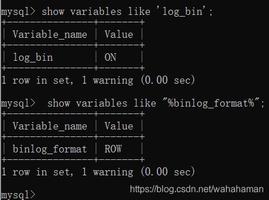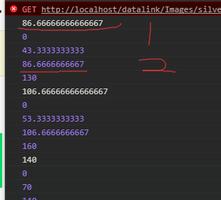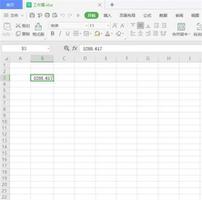Oracle学习(四)DQL语法

标准DQL语法
select distinct * | 列名 as 别名, 列表2 as 别名2... | 聚合函数from 表名 as 别名, 表名2 as 别名2 ,....
where 查询条件
group by 分组字段 having 分组条件
order by 排序字段 asc | desc,....
1、查询 -- 单表查询
1.1、简单查询练习
-- 1 查询水表编号为30408的业主记录select * from t_owners where watermeter = "30408";
-- 使用表的别名
select * from t_owners ow where ow.watermeter = "30408";
-- 2 查询业主名称包含“刘”的业主记录
--- like 语句 %匹配多个字符 _匹配1个字段
select * from t_owners where name like "%刘%";
-- 3 查询业主名称包含“刘”的并且门牌号包含5的业主记录
select * from t_owners where name like "%刘%" and housenumber like "%5%";
-- 4 查询业主名称包含“刘”的或者门牌号包含5的业主记录
select * from t_owners where name like "%刘%" or housenumber like "%5%";
-- 5 查询业主名称包含“刘”的或者门牌号包含5的业主记录,并且地址编号为3的记录。
--- and 优先级 高于 or,如果先执行or,需要使用小括号
select * from t_owners where (name like "%刘%" or housenumber like "%5%") and addressid = 3;
-- 6 查询台账记录中用水字数大于等于10000,并且小于等于20000的记录
--- 关系运算符: > >= < <= == <>
select * from t_account where usenum >= 10000 and usenum <= 20000;
--- 字段 between ... and ...
select * from t_account where usenum between 10000 and 20000;
-- 7 查询T_PRICETABLE表中MAXNUM为空的记录
select * from t_pricetable where maxnum is null;
-- 8 查询T_PRICETABLE表中MAXNUM不为空的记录
select * from t_pricetable where maxnum is not null;
1.2、去重复和排序
-- 去重复-- 需求:查询业主表中的地址ID,不重复显示
select distinct addressid from t_owners;
select distinct(addressid) from t_owners;
-- 排序
-- select ... order by 字段 asc|desc ,字段2 asc|desc,....
--需求:对T_ACCOUNT表按使用量进行升序排序
select * from t_account order by usenum asc
--需求:对T_ACCOUNT表按使用量进行降序排序
select * from t_account order by usenum desc
--需求:对T_ACCOUNT表 按照month降序,如果相同按照usenum进行升序
select * from t_account order by month desc , usenum asc ;
1.3、伪列
- 伪劣是oracle中独有的,伪劣也是真实存在的列,用于查询操作,不能增删改操作。
常见伪列 描述
rowid
物理文件上唯一区别记录的唯一标识 <br>用途:用于区分重复数据
rownum
在查询的结果集中,ROWNUM为结果集中每一行标识一个行号<br>用途:在Oracle进行分页
rowid
- 在mysql表中存在数据相同记录,如果对某一条进行操作,讲修改所有的数据。
Oracle使用rowid区别每一条数据,不会存在操作一条,影响多条的情况。
rownum
-- 查询select rownum,t_account.* from t_account;
1.4、聚合函数
- ORACLE的聚合统计是通过分组函数来实现的,与MYSQL一致。
- 聚合函数:通过提供函数,讲查询结果处理成一行一列数据。
- 特点:聚合函数不计算null值
聚合函数 描述
sum
求和
avg
平均
max
最大值
min
最小值
count
计数
-- 聚合函数--1 统计2012年所有用户的用水量总和
select sum(usenum) from t_account where year = "2012";
--2 统计2012年所有用水量(字数)的平均值
insert into t_account values( seq_account.nextval,2,1,3,"2012","12",95076,99324,null,1,sysdate,44.51,"1",to_date("2014-01-14","yyyy-MM-dd"),2 );
select avg(usenum) from t_account where year = "2012";
--3 统计2012年最高用水量(字数)
select max(usenum) from t_account;
--4 统计2012年最低用水量(字数)
select min(usenum) from t_account;
--5 统计记录个数 count
select count(id) from t_account;
2、查询 -- 连接查询
笛卡尔积:两个表乘积,所有的数据最大集(开发无用)
select * from A , B;内连接
隐式内连接
select * from A , B where a.id = b.id显示内连接
select * from A inner join B a.id = b.aid
外连接
左外连接:查询左表(A)所有数据,如果条件成立显示右边(B)的数据,否则显示null
select * from A left outer join B on a.id = b.aid右外连接:查询右表(B)所有数据,如果条件成立显示左边(A)的数据,否则显示null
select * from A right outer join B on a.id = b.aid
2.1、内连接查询练习
--连接查询-- 1查询显示业主编号,业主名称,业主类型名称
--- 隐式内连接
select ow.id,ow.name,ot.name from t_owners ow , t_ownertype ot
where ow.ownertypeid = ot.id;
--- 显示内连接
select ow.id,ow.name,ot.name from t_owners ow
inner join t_ownertype ot on ow.ownertypeid = ot.id;
-- 2查询显示业主编号,业主名称、地址和业主类型
--- 隐式内连接
select ow.id,ow.name,ad.name,ot.name from t_owners ow , t_ownertype ot , t_address ad
where ow.ownertypeid = ot.id and ow.addressid = ad.id;
select ow.id,ow.name as 业主名称,ad.name 地址名称,ot.name 业主类型名称 from t_owners ow , t_ownertype ot , t_address ad
where ow.ownertypeid = ot.id and ow.addressid = ad.id;
--- 显示内连接
select ow.id,ow.name,ad.name,ot.name from t_owners ow
inner join t_address ad on ow.addressid = ad.id
inner join t_ownertype ot on ow.ownertypeid = ot.id;
-- 3查询显示业主编号、业主名称、地址、所属区域、业主分类
--- 隐式内连接
select ow.id,ow.name 业主名称,ad.name 地址,ar.name 所属区域,ot.name 业主分类 from t_owners ow , t_ownertype ot , t_address ad , t_area ar
where ow.ownertypeid = ot.id and ow.addressid = ad.id and ad.areaid = ar.id
--- 显示内连接
select ow.id,ow.name 业主名称,ad.name 地址,ar.name 所属区域,ot.name 业主分类 from t_owners ow
inner join t_ownertype ot on ow.ownertypeid = ot.id
inner join t_address ad on ow.addressid = ad.id
inner join t_area ar on ad.areaid = ar.id;
2.2、左外连接
-- 左外链接--需求:查询业主的账务记录,显示业主编号、名称、年、月、金额。如果此业主没有账务记录也要列出姓名。
select ow.id,ow.name,ac.year,ac.month,ac.money from t_owners ow
left outer join t_account ac on ow.id = ac.ownerid
2.3、右外连接
--需求:查询业主的账务记录,显示业主编号、名称、年、月、金额。如果账务记录没有对应的业主信息也要列出记录。--- 准备数据,修改将 t_account 表 ownerid 非空约束去掉
insert into t_account values( seq_account.nextval,null,1,3,"2012","12",95076,99324,0,1,sysdate,44.51,"1",to_date("2014-01-14","yyyy-MM-dd"),2 );
select ow.id,ow.name,ac.year,ac.month,ac.money from t_owners ow right outer join t_account ac on ow.id = ac.ownerid
2.4、Oracle左外连接特殊用法(了解)
- 在内连接基础上,使用(+) 转换 左外连接
-- Oracle 班级簿左外连接select ow.id,ow.name,ac.year, ac.month ,ac.money from t_owners ow , t_account ac where ow.id = ac.ownerid (+);
用法:
- 左外连接:在连接条件处,右表条件字段添加(+)
3、子查询
3.1、概述
子查询:一个select语句,作为另一条select语句语法的一部分。
select语句语法:
select distinct * | 字段 from 表名where 查询条件
group by 分组字段 having 分组条件
order by 排序字段 asc | desc
3.2、单行子查询
- 编写步骤,将一个需求拆分成多个子需求,依次完成每一个子需求,最后将组合子需求
-- 查询2012年1月用水量大于平均值的台账记录-- 1 用水量平均值
select avg(usenum) from t_account where year="2012" and month = "01"
-- 2 查询2012年1月所有用水量
select * from t_account where year="2012" and month = "01"
-- 3 合并
select * from t_account where year="2012" and month = "01" and usenum > 20009.5
select * from t_account where year="2012" and month = "01" and usenum > (
select avg(usenum) from t_account where year="2012" and month = "01"
)
3.3、多行子查询
--查询2012年台账中,使用量大于2012年3月最大使用量的台账数据-- 方式1:求最大值
-- 1. 求2012年3月最大使用量
select max(usenum) from t_account where year = "2012" and month = "03"
-- 2. 查询2012年台账 大于 13808
select * from t_account where year = "2012" and usenum > 13808
-- 3. 整合
select * from t_account where year = "2012" and usenum > (
select max(usenum) from t_account where year = "2012" and month = "03")
-- 方式2:使用all运算符
-- 1. 求2012年3月所有使用量
select usenum from t_account where year = "2012" and month = "03"
-- 2. 查询2012年台账 大于 3月所有使用量
select * from t_account where year = "2012" and usenum > all (13808,13390)
-- 3. 整合
select * from t_account where year = "2012" and usenum > all (select usenum from t_account where year = "2012" and month = "03")
3.4、嵌套子查询
- 嵌套子查询:在子查询中再次嵌入子查询
-- 查询在海淀区的小区名字中含有花园的业主记录-- 1. 查询区域id,名称为“海淀” --多个海淀
select id from t_area where name = "海淀"
-- 2. 查询地址id,条件:名称含“花园” 和 区域id
select id from t_address where name like "%花园%" and areaid in (1)
-- 3 组合 1+2
select id from t_address where name like "%花园%" and areaid in (
select id from t_area where name = "海淀"
)
-- 4. 查询业主,条件:一组地址id
select * from t_owners where addressid in (1)
-- 5. 组合
select * from t_owners where addressid in (
select id from t_address where name like "%花园%" and areaid in (
select id from t_area where name = "海淀"
)
)
--- 只有一个海淀
select id from t_address where name like "%花园%" and areaid = (
select id from t_area where name = "海淀"
)
3.5、标量子查询
- 标量子查询:子查询的语句执行的结果直接作为主查询的结果显示
-- 查询台账表中的用户年用水量的总和 以及 年平均用水量-- 1. 查询用水量总和 137868
select sum(usenum) from t_account
-- 2. 查询用水量平均值 5514.72
select avg(usenum) from t_account
-- 3. 将两个不相关的数据,使用虚表 dual 组合在一起
select (137868) as 总和,(5514.72) as 平均 from dual
select (
select sum(usenum) from t_account
) as 总和,(
select avg(usenum) from t_account
) as 平均 from dual
3.6、相关子查询
- 相关子查询:子查询依赖外面的主查询的结果
练习1:3表练习
-- 查询显示业主编号,业主名称、地址和业主类型-- 1. 查询业主编号,名称
select id,name,addressid,ownertypeid from t_owners
-- 2. 根据地址id,查询地址
select name from t_address where id = 1
-- 3. 根据类型id,查询业主类型
select name from t_ownertype where id = 1
-- 4. 组合
select ow.id,ow.name,(
select name from t_address where id = ow.addressid
) 地址名称 ,ownertypeid from t_owners ow
select ow.id,ow.name,(
select name from t_address where id = ow.addressid
) 地址名称 ,(
select name from t_ownertype where id = ow.ownertypeid
) from t_owners ow
练习2:4表练习
-- 查询显示业主编号、业主名称、地址、所属区域、业主分类-- 1. 查询业主编号,名称
select id,name,addressid,ownertypeid, ar.name from t_owners
-- 2. 根据地址id,查询地址
select name from t_address where id = 1
-- 3. 根据类型id,查询业主类型
select name from t_ownertype where id = 1
-- 4. 根据区域id,查询区域
select ar.name from t_area ar, t_address ad where ar.id = ad.areaid and ad.id = 1
-- 5 组合
select ow.id, ow.name,(
select name from t_address where id = ow.addressid
) ,(
select name from t_ownertype where id = ow.ownertypeid
) , (
select ar.name from t_area ar, t_address ad where ar.id = ad.areaid and ad.id = ow.addressid
) from t_owners ow
以上是 Oracle学习(四)DQL语法 的全部内容, 来源链接: utcz.com/z/533857.html








